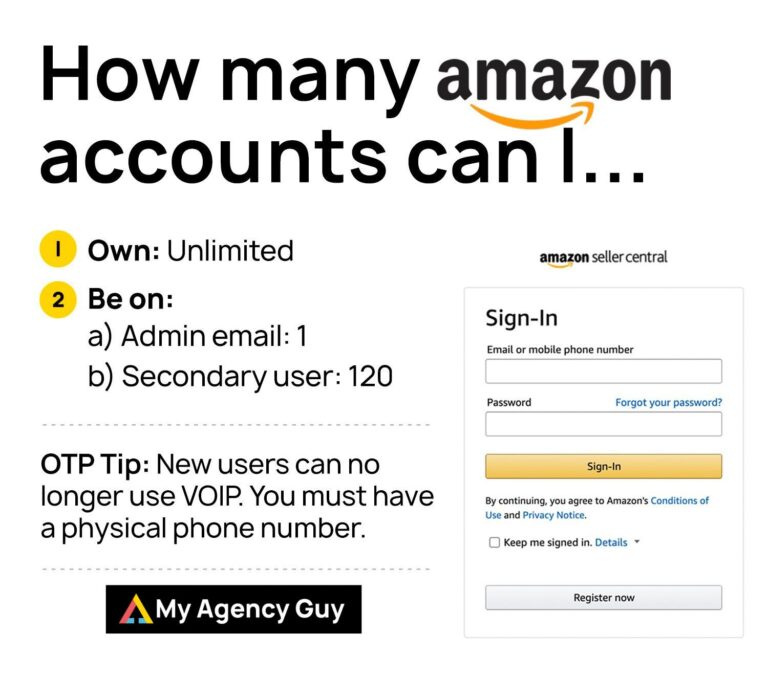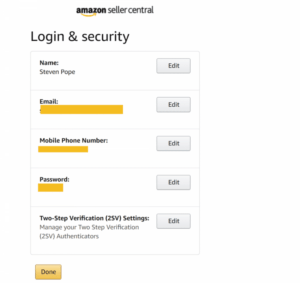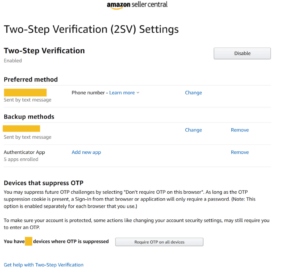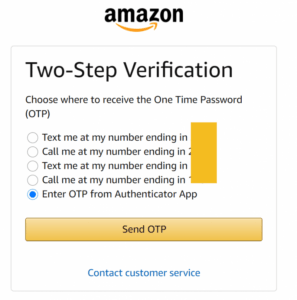How To Have 100 Amazon Accounts On Same Email
Juggling 100 Amazon Accounts on One Email: Where Chaos Meets Strategy
Managing 100 Amazon accounts on the same email is indeed possible, despite skepticism and common beliefs.
By the end of this post, we guarantee that you will learn how to implement a strategy for effectively managing multiple Amazon accounts with a single email.
Disclaimer: This is not about going against Amazon Policies, but about a tested and proven tactic we have been implementing at My Amazon Guy.
Complexity Of Managing Hundreds of Amazon Accounts
A new agency would usually have a few Amazon accounts to manage for its clients, but as it grows and scales, the number of seller accounts might require an updated management strategy.
Case Study:
In its early days, My Amazon Guy navigated the nuances of managing a handful of Amazon accounts. As the agency experienced rapid growth, the number of seller accounts under management surged.
Challenge: How can 500 employees manage over 1,200 Amazon accounts from over 400 brands?
Solution: Effective email usage for User Permissions – One email for 100 Amazon accounts
A Common Agency Mistake To Avoid
Launching an Amazon agency is an exciting venture, but for many owners new to the game, the initial steps can lead to unforeseen challenges.
For many agency owners who’ve never navigated these waters before, the temptation is to swiftly set up new Seller Central accounts, add banking information, and input tax details in one go.
Attempting to link a freshly created account to a multitude of existing ones might seem like a time-saving move, but it’s a maneuver that goes against Amazon’s policies. This misstep can lead to severe consequences, including account suspension.
A Smarter Strategy To Implement
Instead of navigating the complexities of setting up a brand new Seller Central account, the key is to utilize the power of an account’s user permissions. The process involves sending a straightforward email invite from a current account to the desired new email address.
Scalability without Complications
Zero Bank Account Prompts: Adding a user doesn’t prompt for bank account details, eliminating a significant hurdle.
User Integration Across Multiple Accounts: A single email address can be seamlessly added as a user to up to about a hundred different accounts, streamlining the management process.
User Permissions: One Email For 100 Amazon Accounts
Amazon Seller Central incorporates a valuable feature known as “User Permissions,” providing a structured way to grant varying levels of access to authorized individuals.
When appropriately configured, it allows account holders to assign distinct access levels to designated individuals, facilitating collaboration and operational efficiency.
Read Efficiently Set Up Amazon Seller Central User Permissions With This Complete Guide to know more about User Permissions.
Always Remember
One admin email for each Amazon account.

One Email For Multiple Amazon Accounts Risk Mitigation: OTP Generation
The risk involved in this solution is that multiple people will have access to the account, but this can be addressed by OTP Generation
Setting Up One Time Password For Amazon
- In your Seller Central dashboard, click Settings / Login Settings

2. Click Edit on 2-step verification settings

3. Hit “Add new app”

4. Choose how you’ll receive the OTP code from Amazon
5. Download and set up 1Password
6. Scan QR code and enter code from 1Password

One Email For Multiple Amazon Accounts OTP Management: 1Password
Here at My Amazon Guy, our current OTP management tool is 1Password. While Amazon agencies are free toi choose any tool and software they like, here are some key insights about 1Password that you might want to consider:
Security Measures:
- Ensures security even when dealing with a large number of accounts (up to a thousand Seller Central accounts).
- Simplifies account security during employee turnover by removing access without notifying others.
- Addresses the challenge of employees saving QR codes.
Scaling with Agency Growth:
- Suitable for boutique agencies (up to 40 accounts) and scalable to larger agencies.
- Provides user controls, mechanisms, and vaults essential for managing a scaled agency.
Password Refresh and Internal Stress:
- Highlights the stress caused by frequent password updates in large agencies.
- Its notification-free password changes ease the internal stress associated with employee turnovers.
Effectively Managing Multiple Amazon Accounts
Managing email and OTP is just the tip of the iceberg for an Amazon agency’s brand management priorities for clients. Beyond ensuring secure access, strategic brand registry, and seamless account transitions, the complexities of maintaining brand integrity on Amazon demand a comprehensive approach.
Running multiple Amazon accounts is legitimate when done within Amazon’s guidelines. The bad reputation arises from the misuse of multiple accounts, such as selling the same items across them, which is prohibited.
Getting Started:
- Separate business entities, tax structures, banking, credit cards, and email domains for each account.
- Example scenario: Partial ownership in two businesses with different stakeholders.
- Important: Avoid selling the same or similar brands across multiple accounts.
Opening a Second Account:
Preferred Method: Warm Introduction
- Utilize direct ties to Amazon’s sales team for a strategic account.
- Request a seller invite for the new business with unique infrastructure.
Alternative Method: Direct Application
- Open a new seller account through Seller Central.
- No need for multiple IP addresses or VPN; Amazon is aware of businesses operating from the same location.
- Caution: Use different credit cards and bank accounts to avoid linking accounts.
Managing Multiple Accounts:
Managing hundreds of Amazon Seller accounts for an agency requires meticulous organization, deep knowledge of Amazon policies, and robust security measures. Here are some crucial things to consider:
Compliance and Policy:
- Prioritize adherence to Amazon’s Terms of Service and Seller Central policies. Ignorance is not an excuse, so stay updated on the latest rules and regulations.
- Separate each account clearly. Maintain distinct email addresses, bank accounts, tax information, and physical addresses (if applicable) for every account. Avoid commingling funds or resources.
- Use sub-users for client access control. Granular permissions prevent unauthorized activity and minimize risk of policy violations.
- Obtain Amazon’s approval before opening new accounts. Justify each account with a legitimate business need.
Security and Scalability:
- Invest in secure password management tools. OnePassword or LastPass can eliminate shared logins and simplify access management for hundreds of accounts.
- Consider employing burner phones for initial account creation. This further strengthens separation and reduces potential linking between accounts.
- Develop a system for managing multiple email addresses. As your client base grows, use dedicated emails for batches of accounts to ensure smooth administration.
- Implement automation wherever possible. Use tools and scripts to automate routine tasks like reporting, performance monitoring, and inventory management. This saves time and reduces human error.
Efficiency and Performance:
- Segment accounts based on needs and performance. Tailor strategies and optimize campaigns for each group to maximize ROI.
- Regularly monitor account health and performance metrics. Identify potential issues early and take corrective action.
- Invest in data analytics tools. Utilize insights to understand customer behavior, optimize product listings, and make informed business decisions.
- Maintain open communication with clients. Provide regular updates, reports, and performance analyses to build trust and transparency.
Additional Considerations:
- Build a team with diverse expertise. You’ll need experts in Amazon policies, account management, advertising, data analysis, and customer service.
- Establish robust data security protocols. Protect sensitive client information and prevent unauthorized access.
- Stay up-to-date on industry trends and best practices. Continuously adapt your strategies and technologies to remain competitive.